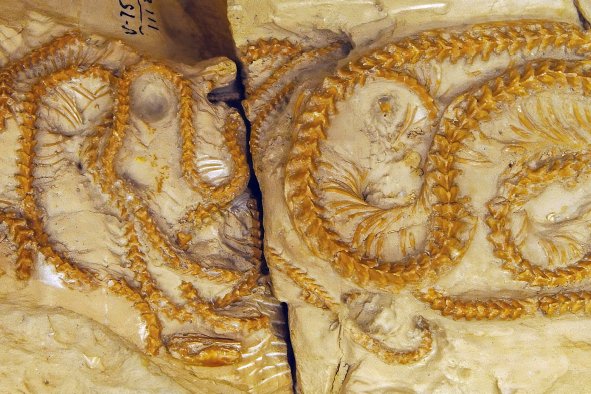One of NASA's Martian rovers has discovered a strange rock filled with yellow sulfur crystals.
The Curiosity rover made the exciting find after accidentally running over a rock on May 30, which cracked open to reveal the crystals.
This has fascinated scientists, as sulfur crystals have never before been seen on Mars.
"Finding a field of stones made of pure sulfur is like finding an oasis in the desert," Ashwin Vasavada, Curiosity's project scientist at NASA's Jet Propulsion Laboratory in Southern California, said in a NASA statement. "It shouldn't be there, so now we have to explain it. Discovering strange and unexpected things is what makes planetary exploration so exciting."
The Curiosity rover landed on Mars's surface in August 2012 and has been exploring the Gale Crater ever since. Specifically, it is climbing and studying Mount Sharp (Aeolis Mons), a central peak within the crater.
Curiosity's ongoing mission involves studying the sedimentary rock layers on Mount Sharp to understand the history of water on Mars and how the planet's climate has changed over time.
For several months, Curiosity has been located in the Gediz Vallis channel, a valley down the side of Mount Sharp. This region was found to have lots of sulfates—a salt containing sulfur—in the soil. However, what the rover found inside the rock wasn't sulfate but crystals of pure sulfur. The stones surrounding the crushed one look very similar, implying that they, too, may contain sulfur crystals.
This is fascinating for scientists, as sulfur crystals only form in a relatively niche set of conditions, which had not previously been thought to have occurred at this location on Mars.
Curiosity has made a number of other discoveries in the Gediz Vallis channel in the past few months.
This ancient channel shows signs of erosion, which indicates that liquid water once flowed through the area, carving out the channel and shaping the surrounding landscape. The channel cuts through multiple sedimentary layers, each representing different periods in Mars' history. Exploring Gediz Vallis helps scientists understand the extent and duration of liquid water presence on Mars, which is crucial for assessing the planet's habitability.
The channel was also found to have large piles of debris along its floor, which Curiosity has been investigating. Using data from the rover, scientists have determined that these piles were likely deposited both by ancient flooding and by more recent landslides.
"This was not a quiet period on Mars," Becky Williams, a scientist with the Planetary Science Institute in Tucson, Arizona, and the deputy principal investigator of Curiosity's Mast Camera, said in the statement. "There was an exciting amount of activity here. We're looking at multiple flows down the channel, including energetic floods and boulder-rich flows."
The sulfur rocks were too small and fragile to be sampled using Curiosity's drill, but the rover instead drilled a sample from a large nearby rock named "Mammoth Lakes." The contents of the rock will then be analyzed and hopefully reveal more secrets of this strange area of Mars.
Do you have a tip on a science story that Newsweek should be covering? Do you have a question about Mars? Let us know via science@newsweek.com.
Disclaimer: The copyright of this article belongs to the original author. Reposting this article is solely for the purpose of information dissemination and does not constitute any investment advice. If there is any infringement, please contact us immediately. We will make corrections or deletions as necessary. Thank you.



